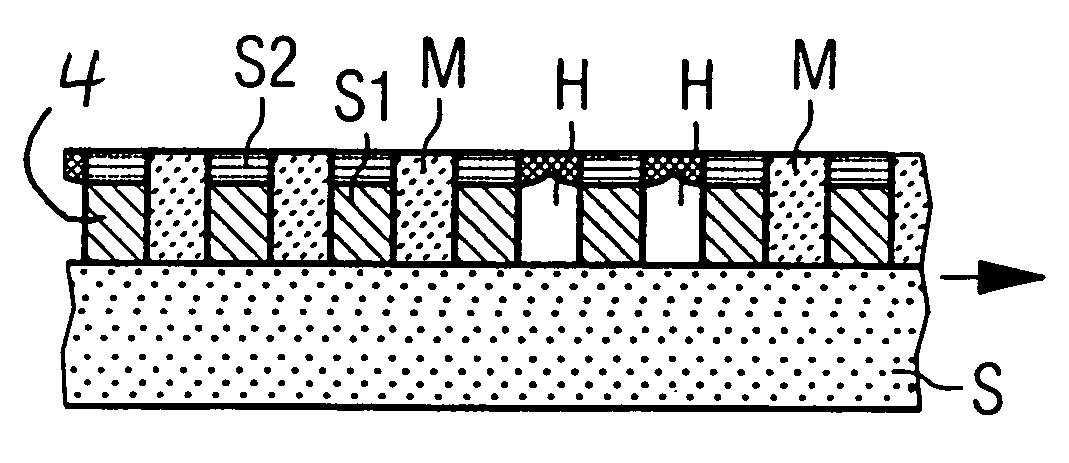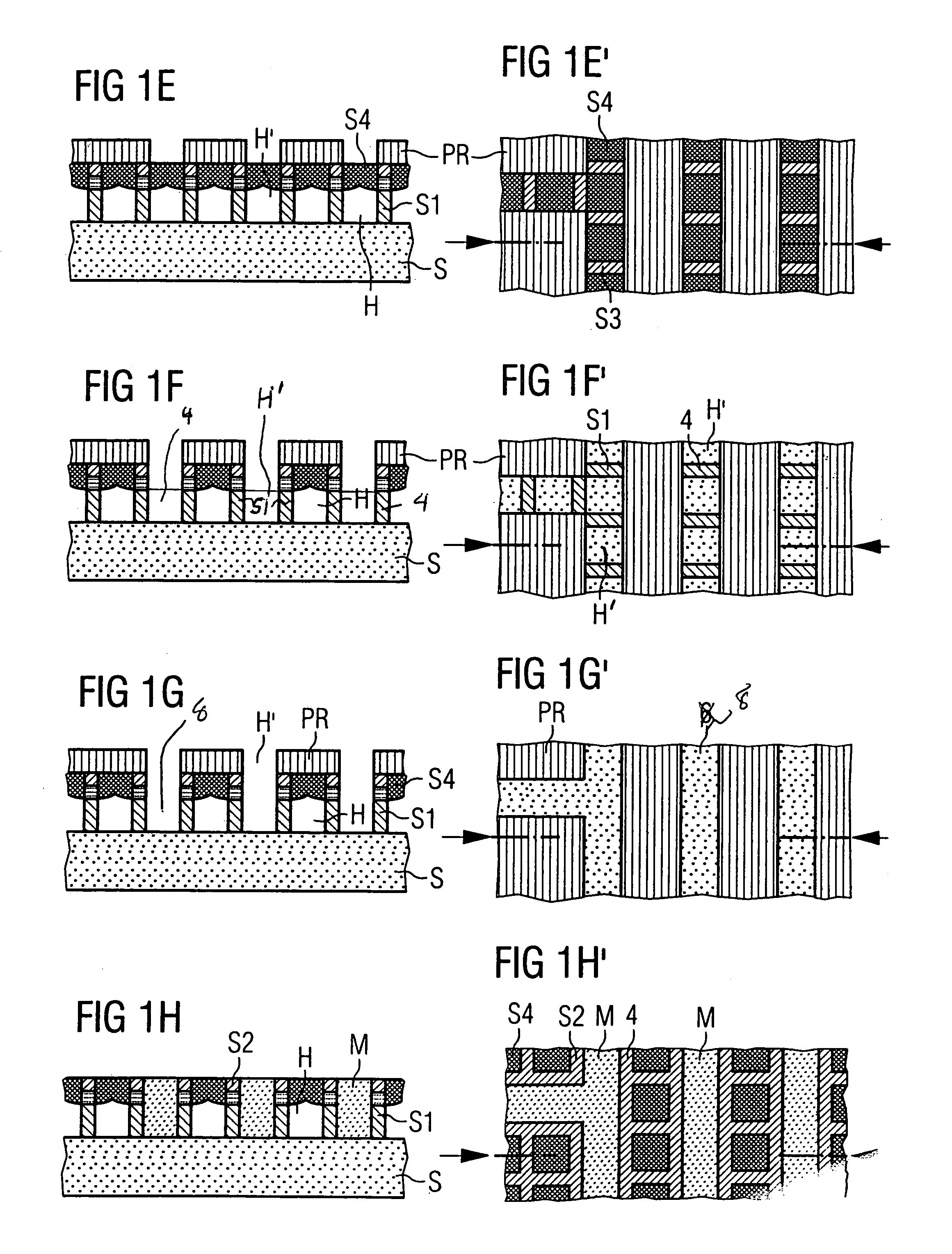Arrangement of microstructures
a microstructure and arrangement technology, applied in the field of semiconductor technology, can solve the problems of increasing the complexity of the structure contained in the integrated circuit, increasing the signal propagation time, and decreasing the limiting frequency, and achieve the effect of reducing the effect of proximity effects
- Summary
- Abstract
- Description
- Claims
- Application Information
AI Technical Summary
Benefits of technology
Problems solved by technology
Method used
Image
Examples
Embodiment Construction
[0060]FIGS. 1A–1I′ show an embodiment of the “cellular damascene method”, in which the microstructures to be fabricated are separated from one another by cavities. The cavity pattern produced in this case extends over the entire surface of a chip to be fabricated or at least over the majority of its area.
[0061]FIG. 1A is a cross-sectional view that shows a substrate S, on which three dielectric layers S1, S2 and S3 have been successively deposited. At least the material of the second layer S2 differs from the material of the first layer S1 and of the third layer S3. By way of example, the first and third layers S1 and S3 may comprise silicon nitride and the second layer S2 may comprise silicon oxide which has been formed by means of a plasma-enhanced deposition from a silane atmosphere. In this case, the first layer S1 performs the function of a carrier layer and defines the height of the cavities that are subsequently to be formed. For this reason, this layer has a thickness that i...
PUM
| Property | Measurement | Unit |
|---|---|---|
| angle | aaaaa | aaaaa |
| dielectric constants | aaaaa | aaaaa |
| sharp angles | aaaaa | aaaaa |
Abstract
Description
Claims
Application Information
 Login to View More
Login to View More - R&D
- Intellectual Property
- Life Sciences
- Materials
- Tech Scout
- Unparalleled Data Quality
- Higher Quality Content
- 60% Fewer Hallucinations
Browse by: Latest US Patents, China's latest patents, Technical Efficacy Thesaurus, Application Domain, Technology Topic, Popular Technical Reports.
© 2025 PatSnap. All rights reserved.Legal|Privacy policy|Modern Slavery Act Transparency Statement|Sitemap|About US| Contact US: help@patsnap.com



